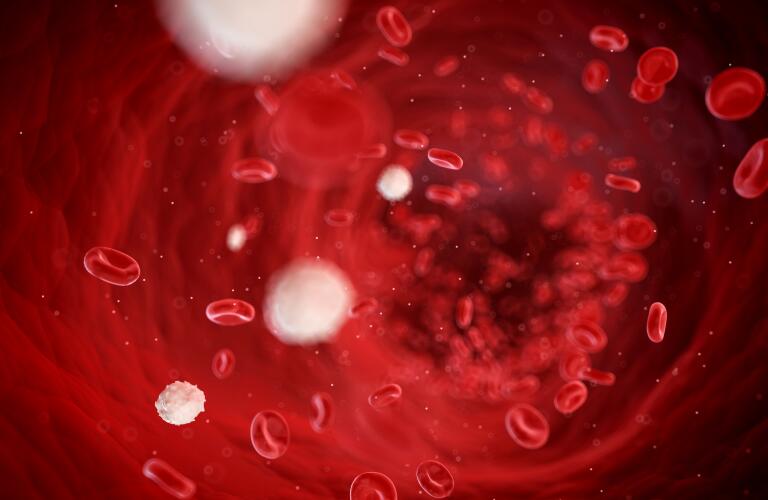
Your blood contains three types of cells: red, white, and platelets. White cells perform functions related to infection control inside the body. Platelets make the blood clot. And red blood cells (RBCs) carry oxygen to the tissues by transporting hemoglobin. Hemoglobin is a protein attached to red cells that picks up oxygen when the cells travel through the lungs and deposits the oxygen in the tissues where needed.
Various types of red blood cell disorders can cause a red blood cell count to be low or high. Anemia often is what causes a low red blood cell count, and rare disorders like red or white cell cancers can cause a high red blood cell count. The red blood cell count normal ranges for adults are:
- Men: 4.5 to 5.9 x 106 per microliter of blood
- Women: 4.1 to 5.1 x 106 per microliter of blood
For children, the reference range (“normal range”) of RBCs on lab test results can vary significantly. Your pediatric provider can guide you regarding how to interpret the RBC lab results for your child.
Why Your Healthcare Provider Checks Your RBC Count
Your healthcare provider will check your red blood cell count routinely, as part of your annual exam. Because RBCs play such an important role in overall health, checking their levels annually can offer early signs of any underlying health issues. Your provider also might test your RBC count if you have signs and symptoms of a blood-related health disorder. Fatigue and shortness of breath, for example, can indicate iron-deficiency anemia—a very common cause of low red blood cell counts.
What Abnormal RBC Lab Results Might Mean
Your red blood cell count may be slightly low or high, which is not necessarily abnormal or anything that needs to be treated. Every human body is unique, and yours may consistently carry a few more or a few less red cells, which is no cause for alarm.
Sometimes, though, a disease process can cause red blood cell counts to become very elevated or very low. Usually those underlying conditions must be treated to bring the RBC back into normal ranges. A few reasons why your RBC lab test might be low or high include:
- Aplastic anemia occurs when damaged stem cells in the blood marrow cause reduced production of red blood cells.
- Dehydration can cause an abnormally high proportion of red blood cells within whole blood.
- Heart and lung disorders, that result in reduced oxygenation (such as heart failure), can cause an abnormally high red blood cell count as the body manufactures additional red cells to carry oxygen to the vital tissues.
- Iron-deficiency anemia, a condition in which a lack of dietary iron causes decreased production of hemoglobin, is the most common cause of abnormally low RBC test results.
- Kidney disorders can stimulate the production of hormones that cause the bone marrow to manufacture additional red blood cells.
- Polycythemia vera, a rare type of blood cancer, can cause an overproduction of red blood cells.
- Sickle cell disease, a condition that mainly affects African Americans and results in the production of malformed hemoglobin that does not efficiently carry oxygen molecules to the tissues, can cause abnormal RBC results.
- White blood cell cancer. If a disorder reduces the number of white cells in the blood, the RBC count may become elevated by comparison.
Questions to Ask Your Healthcare Provider About Your RBC Lab Results
If you receive abnormal RBC lab results, you should consult your healthcare provider to find out what, if anything, needs to be done about them. A few questions to ask include:
- Why is my RBC high?
- Do I need to do anything about this?
- When should we retest my RBCs to see if they’re normal?
- Could there be an underlying medical condition causing this?
In many cases, a slightly abnormal RBC is no cause for alarm. If you’re otherwise healthy, your healthcare provider may take a wait-and-see approach that includes monitoring your RBC over time to look at trends. Other times, your provider may suggest lifestyle changes (like eating more iron-rich foods or drinking more water) to help normalize your red blood cell count.
If your RBC does reveal an underlying medical condition that requires treatment, you can work closely with your healthcare provider to develop a personalized treatment plan that gets you back to your active lifestyle as quickly as possible.




